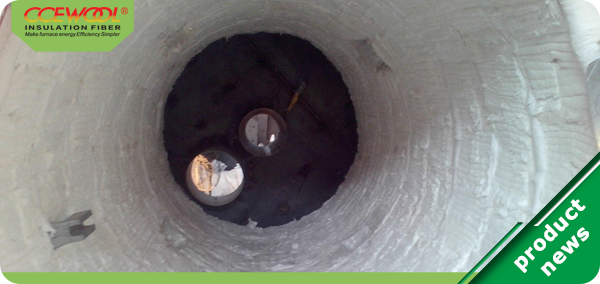This issue we will continue to introduce advantages of refractory ceramic fibre.
There is no need for oven preheating and drying after construction
If furnace structure is refractory bricks and refractory castables, the furnace must be dried and preheated for a certain period as per requirement. And the drying period for refractory castable is especially long, generally 4-7 days, which reduces the utilization rate of the furnace. If the furnace adopts whole fiber lining structure, and not restricted by other metal components, the temperature of furnace can be quickly raised to working temperature after construction. This not only improves the utilization rate of industrial furnaces, but also reduces non-production fuel consumption.
Very low thermal conductivity
Refractory ceramic fibre is a fiber combination with a diameter of 3-5um. There are many voids in the masonry and the thermal conductivity is very low. However, at different temperatures, the lowest thermal conductivity has a corresponding optimal bulk density, and the lowest thermal conductivity and corresponding bulk density increase with the increase of temperature. According to the experience of using the full-fiber structure cracking furnace in recent years, it is best when the bulk density is controlled at 200~220 kg/m3.
It has good chemical stability and resistance to air erosion:
Only phosphoric acid, hydrofluoric acid and hot alkali can corrode refractory ceramic fibre. Refractory ceramic fibre is stable to other corrosive media.
Post time: Jun-28-2021


